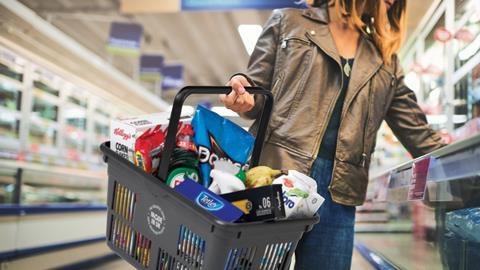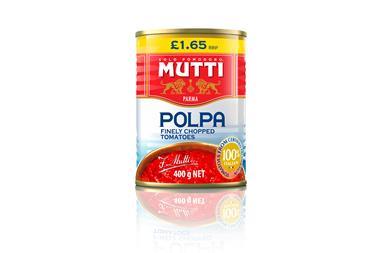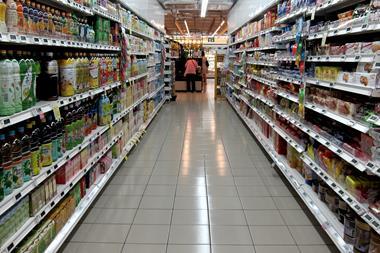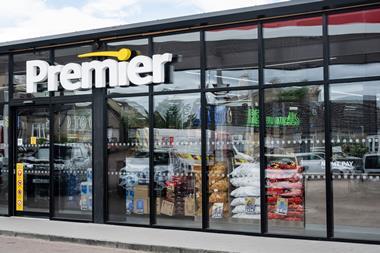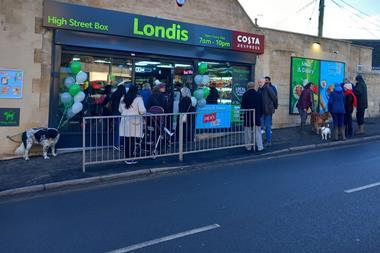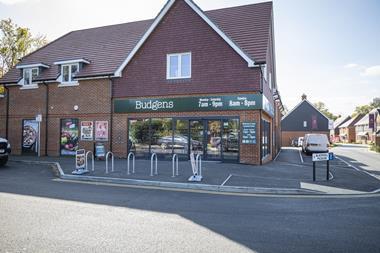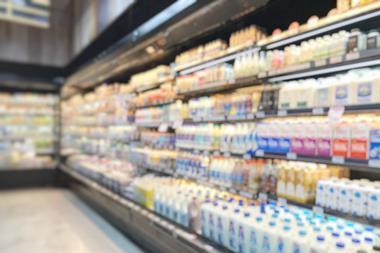Convenience retail should simply be that, convenient, meaning the right basket offering can make or break customer experiences in store. Here we explore the impact of this hardware on shoppers and staff, and how you can maximise the hardware’s effectiveness.
In the world of convenience retail, the tools you offer customers can directly impact sales and satisfaction.
A seemingly simple choice, like providing shopping baskets, can either elevate the shopping experience or create hidden barriers. The right selection, quantity and type of baskets can greatly influence how much customers buy, how easily they shop and even whether they return.
Finding the right number of baskets for your store
Each convenience store is unique, and its ideal number of baskets depends on factors such as store size, customer traffic and shopping habits. Larger stores generally need more baskets to accommodate customer volume, while smaller stores with frequent customer turnover may get by with fewer. For example, if a store sees 30 customers at peak times and expects two-thirds of them to use baskets, stocking at least 20 baskets ensures enough are available.
Customer traffic also impacts basket needs. During peak times, it’s essential to have one basket available for every two or three customers, which minimises wait times, keeping shoppers comfortable. Quick basket turnover (where customers quickly return them for the next shopper) can also reduce the total number needed. This approach means fewer customers will be forced to juggle items, leading to smoother and more satisfying shopping experiences.
The hidden costs of not having enough baskets
Stores that fail to provide sufficient baskets risk losing sales and, potentially, customers. Without an easy way to carry items, customers might struggle or become frustrated, ultimately buying fewer products or abandoning items they’d intended to purchase. Shoppers without a basket may also lead to congestion and operational slowdowns as they balance items.
Moreover, a lack of baskets can negatively impact how customers perceive the store. Without this essential convenience, some may see the store as poorly managed or unfriendly to customer needs, which can discourage repeat visits. Satisfied shoppers, on the other hand, are more likely to return and recommend the store to others, emphasising the role baskets play in shaping customer loyalty and the store’s reputation.
Choosing between hand baskets and trolley baskets
Hand baskets and trolley baskets each serve specific customer needs and selecting the best fit for your store depends on factors such as space, customer habits and product offerings.
Hand baskets are space-efficient and easy to navigate in smaller stores with tight aisles. They’re cost-effective and quick for customers who only need a few items. However, hand baskets hold less and can cause physical strain for customers carrying heavier or more numerous items, which may discourage additional purchases.
Trolley baskets offer increased capacity, allowing customers to shop comfortably even with heavier loads. They’re particularly helpful for elderly customers or those with physical limitations, encouraging longer browsing and potentially higher transaction values. However, trolley baskets require more storage space and may be difficult to manoeuvre in small aisles, which can lead to congestion. They’re also more costly to maintain than hand baskets.
A mix of both basket types often works best, offering versatility for stores with limited space but varied customer needs.

Adapting to delivery service demands
With the rise of online shopping and the demand for local delivery services, convenience stores increasingly serve as mini-fulfilment centres, where speed is critical.
For rapid delivery services, orders are expected to be ready for collection within 15 minutes and drivers often wait around the store, adding pressure on fulfilment. Meeting these demands has reshaped how baskets and trolleys are used, especially during peak times. Without dedicated equipment for picking orders, store staff often rely on customer baskets and trolleys, which can take these essential items out of circulation just when in-store demand is at its peak.
To streamline the process and keep customer-facing baskets available, many stores have turned to multi-compartment picking carts.
These carts allow staff to gather multiple orders simultaneously, minimising retrieval time and keeping pace with rapid delivery requirements. For smaller stores, standard shopping carts are sometimes used as an alternative, though these are typically less efficient than dedicated picking carts. By investing in specialised tools for order picking, stores can prevent interruptions in customer basket availability and ensure a smoother, faster fulfilment process that meets the needs of both in-store shoppers and delivery service expectations.
Considerations for basket material and placement
Selecting plastic over metal for baskets and trolleys is increasingly important, especially in stores with glass-fronted refrigerators and displays. Plastic trolleys and baskets prevent accidental scratches, dents or potential glass breakage that traditional metal alternatives might cause, making them a safer option for maintaining store aesthetics and reducing costly damages.
The location of baskets within the store is also a strategic consideration. Placing stacks of baskets not only at entrances but also near the rear of the store can enhance the shopping experience. When customers who came in for one item find themselves carrying several, having a convenient stack of baskets nearby allows them to comfortably continue shopping and potentially pick up additional items on their way to the checkout.
The solution for larger purchases
Some convenience stores, especially those with larger layouts, find value in offering trolleys.
Becoming more and more common with the increasing size of convenience stores, though still less common than baskets, trolleys can enhance the shopping experience for customers purchasing bulkier items, like cases of drinks or large grocery loads. They reduce physical strain, making shopping more accessible to a broader audience and can potentially boost average purchase size.
It is also worth considering offering trolleys with child seats can dramatically improve any parents shopping experience.
However, trolleys do present challenges in smaller spaces. They require storage, regular maintenance and risk creating aisle blockages if not well-managed. And if the typical customer only buys a few items, trolleys might go underutilised, making them a less practical choice in high-traffic, compact stores.
A balanced approach
For most convenience stores, offering a mix of hand baskets, trolley baskets and perhaps a few trolleys is an ideal way to cater to varied customer needs. Stores that understand their specific customer base—whether they tend to buy single items or fill a basket—can better match their basket offerings, enhancing both customer convenience and in-store flow.
By paying attention to basket quantity and types, convenience stores can not only improve customer experience but also support stronger sales. The right baskets make shopping easier, leading to satisfied customers who spend more, return more frequently and share positive experiences.

For more information on your trolley and basket options, please visit www.formbar.co.uk





















